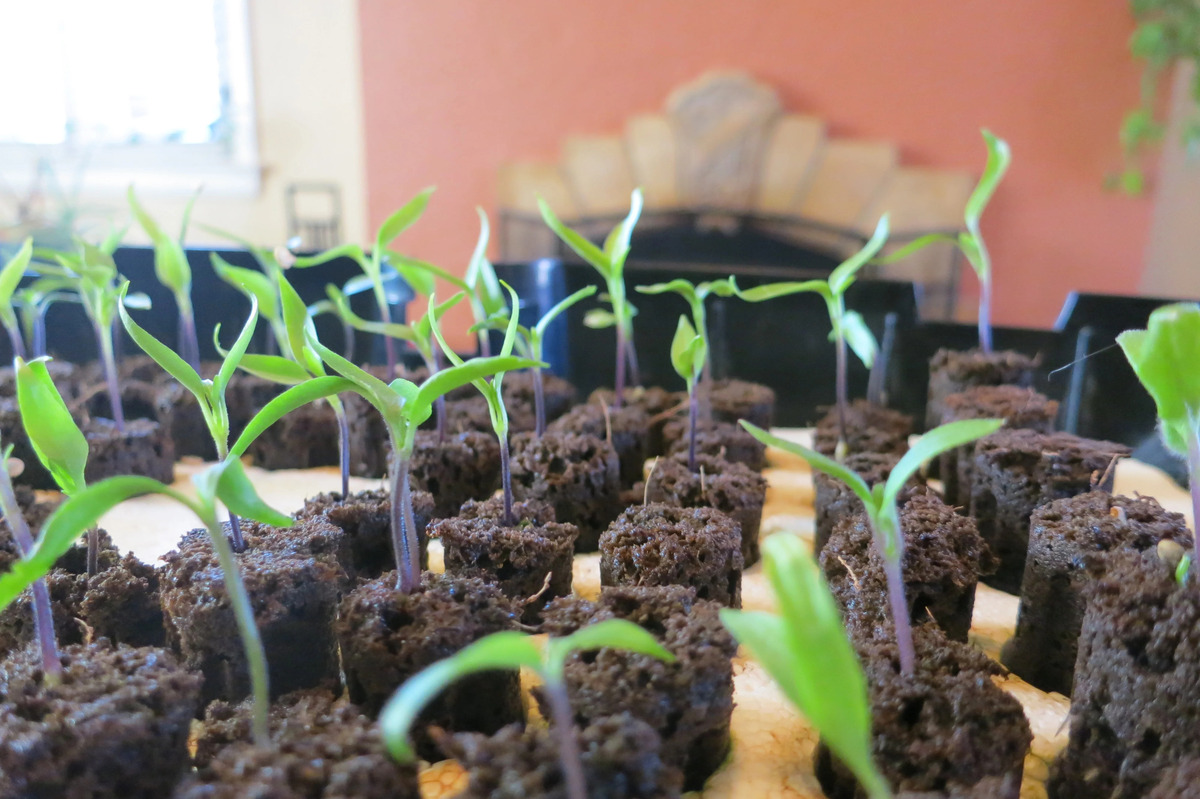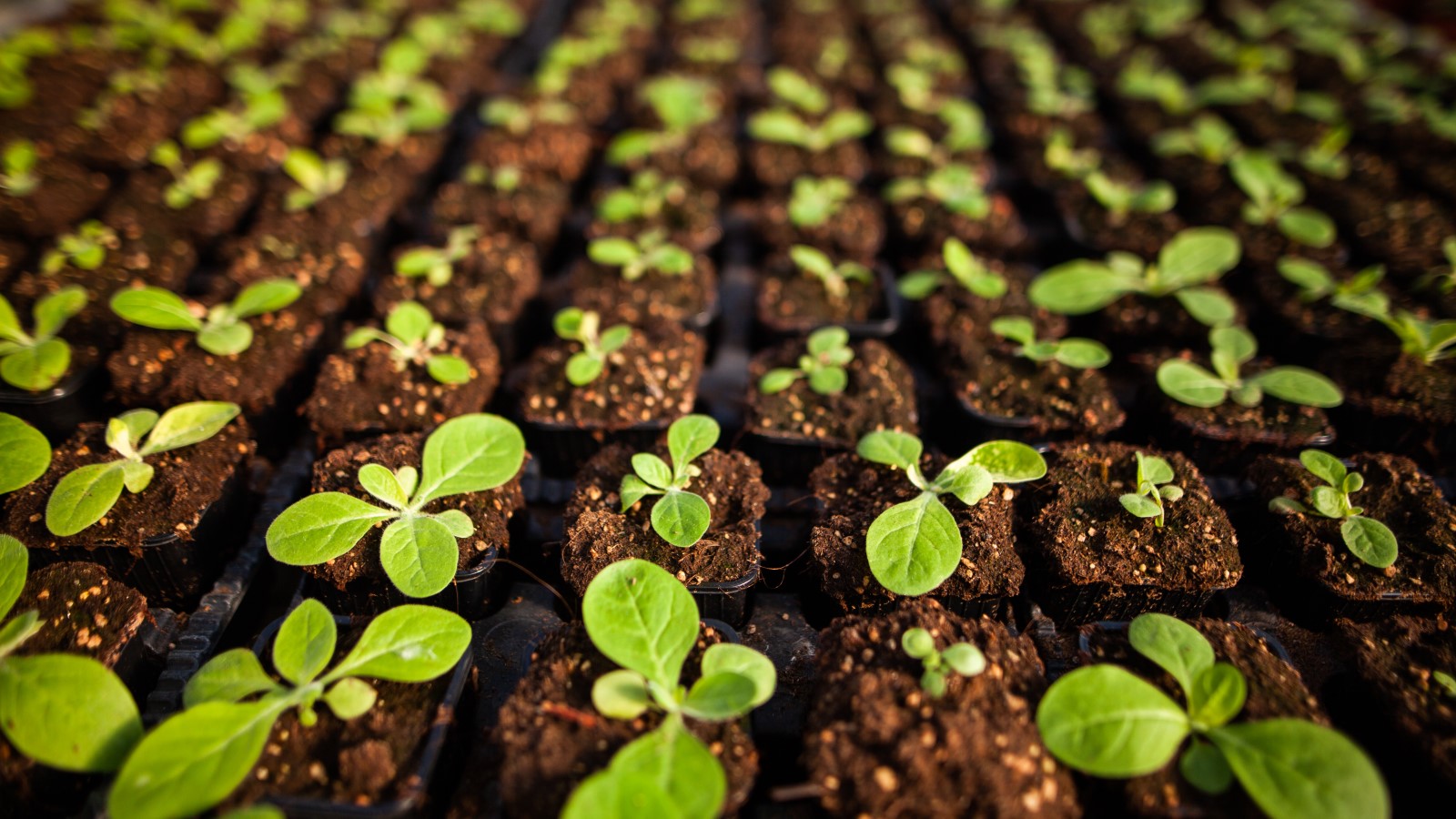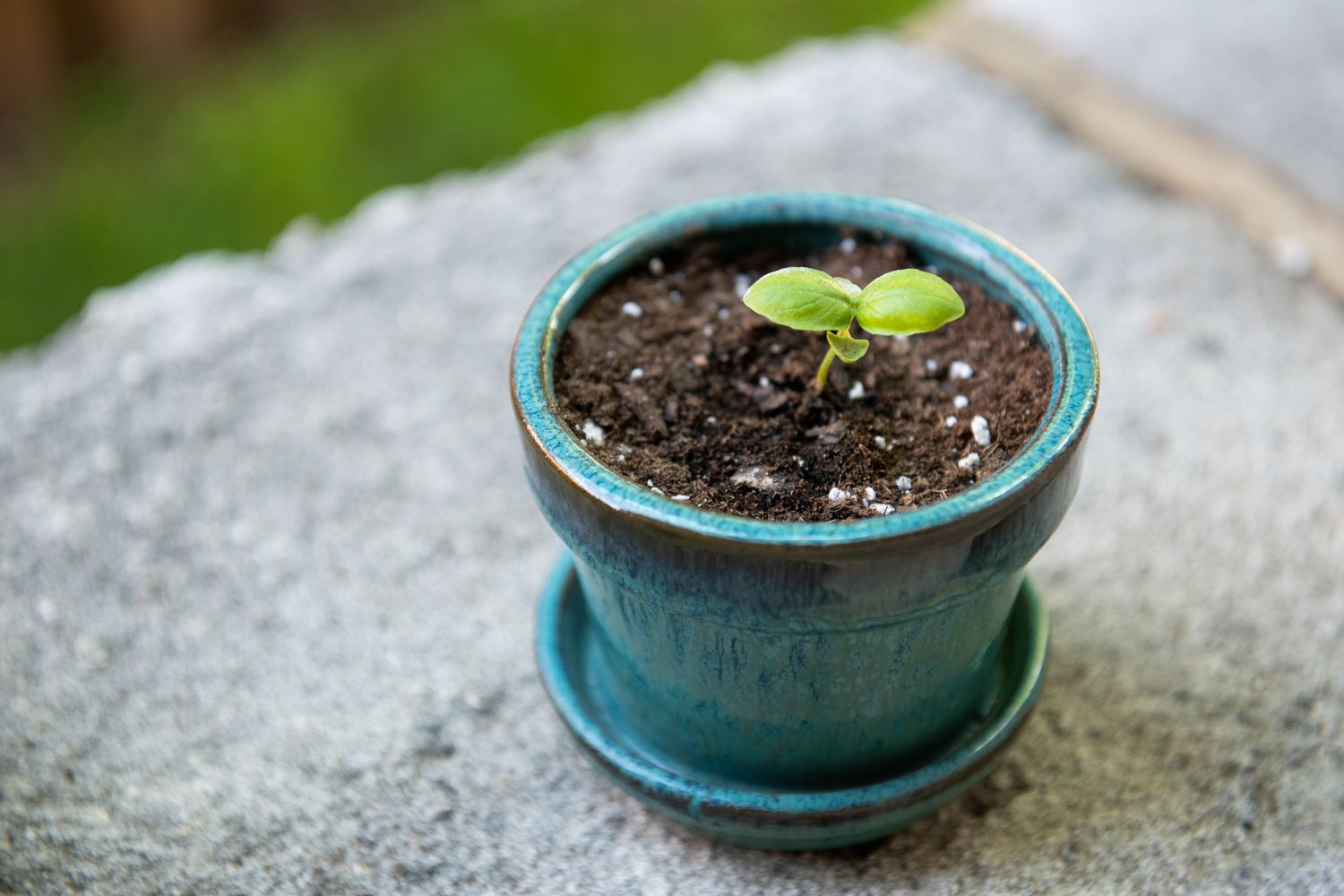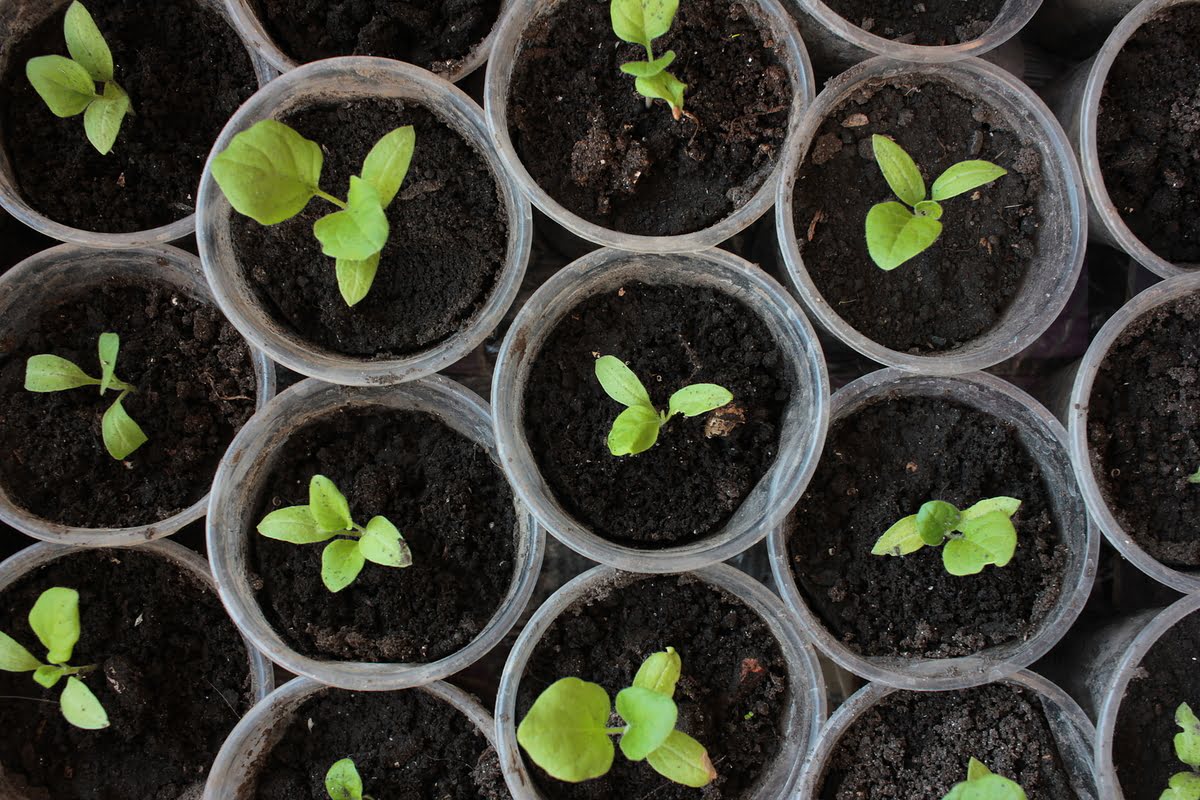Home>Types of Gardening>Edible Gardening>When To Take Plastic Cover Off Seedlings
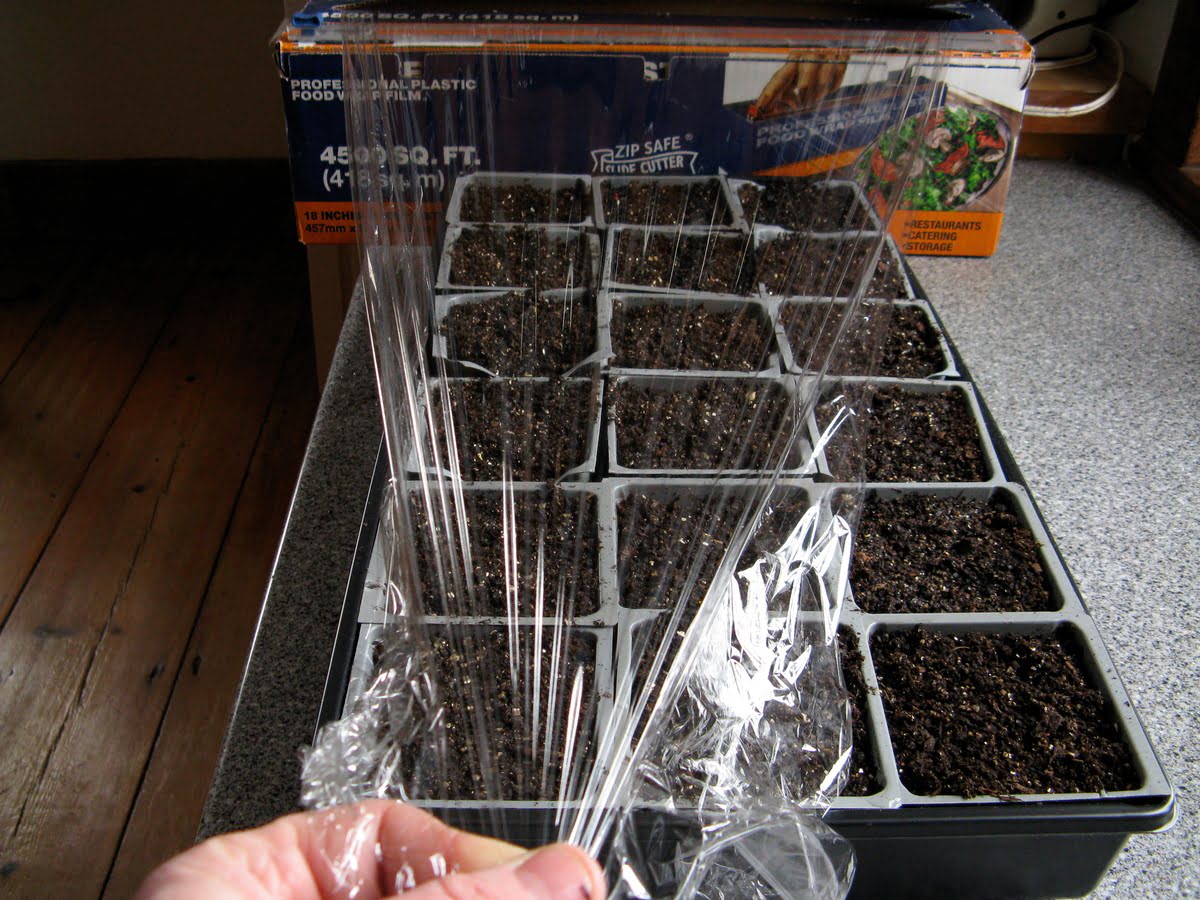

Edible Gardening
When To Take Plastic Cover Off Seedlings
Published: January 1, 2024
Learn when to remove plastic covers from your seedlings for successful edible gardening. Discover the best timing and methods for protecting your young plants.
(Many of the links in this article redirect to a specific reviewed product. Your purchase of these products through affiliate links helps to generate commission for Chicagolandgardening.com, at no extra cost. Learn more)
Table of Contents
**
Introduction
**
Starting seeds indoors is an exciting and rewarding endeavor for many gardeners. It allows for a head start on the growing season, giving plants ample time to mature before being transplanted outdoors. One common practice in seed starting is using a plastic cover to create a greenhouse-like environment for the seedlings. This cover helps to maintain warmth and humidity, promoting healthy germination and early growth. However, knowing when to remove the plastic cover from seedlings is crucial for their successful transition to the outdoor environment.
The decision to remove the plastic cover is influenced by various factors, including the seedling's growth stage, outdoor weather conditions, and the need for gradual acclimatization. Understanding these factors is essential for ensuring the seedlings thrive once exposed to the elements. In this article, we will explore the importance of the plastic cover for seedlings, the factors to consider before removing it, the optimal timing for removal, and the gradual acclimatization process. By delving into these aspects, you will gain valuable insights into nurturing robust and resilient seedlings, setting the stage for a bountiful garden.
**
Importance of Plastic Cover for Seedlings
**
The plastic cover plays a pivotal role in creating a favorable microclimate for seedlings during their early growth stages. By enclosing the seed trays or pots, the cover helps to retain moisture, warmth, and humidity, which are vital for successful germination and initial growth. This controlled environment mimics the conditions of a greenhouse, providing an optimal setting for seedlings to thrive.
Furthermore, the plastic cover acts as a shield, protecting the delicate seedlings from external stressors such as fluctuations in temperature, drying winds, and potential pest damage. It creates a barrier against sudden environmental changes, offering a stable and sheltered space for the young plants to establish themselves.
Another significant benefit of the plastic cover is its ability to enhance seedling root development. The retained moisture and warmth encourage robust root growth, laying a strong foundation for healthy and resilient plants. Additionally, the cover aids in preventing excessive moisture loss, especially in arid or drafty indoor environments, ensuring that the seedlings remain adequately hydrated.
As the seedlings gradually acclimate to the outdoor environment, the plastic cover serves as a transitional aid, easing the shift from the sheltered indoor conditions to the external elements. This gradual transition is essential for minimizing transplant shock and promoting successful establishment once the seedlings are transplanted into the garden or larger containers.
Understanding the pivotal role of the plastic cover in nurturing seedlings underscores its significance in the early stages of plant development. By providing a conducive and protective environment, the cover sets the stage for robust growth and prepares the seedlings for their eventual transition to the outdoor setting.
**
Factors to Consider Before Removing Plastic Cover
**
Before removing the plastic cover from seedlings, several crucial factors should be carefully evaluated to ensure a smooth transition and continued healthy growth. Understanding these considerations is essential for safeguarding the well-being of the young plants and optimizing their chances of thriving in the outdoor environment.
First and foremost, assessing the developmental stage of the seedlings is paramount. While the plastic cover provides a sheltered environment conducive to early growth, it’s essential to wait until the seedlings have matured sufficiently before exposing them to outdoor conditions. Seedlings should exhibit robust growth with well-established roots and sturdy stems, indicating their readiness for the transition.
Additionally, monitoring the outdoor weather conditions is vital. Extreme temperatures, frost, strong winds, or heavy rainfall can pose significant challenges to newly exposed seedlings. It’s crucial to wait for favorable weather patterns, characterized by mild temperatures and minimal risk of frost or inclement weather, before removing the plastic cover. This proactive approach minimizes the stress on the seedlings and enhances their chances of successful acclimatization.
Furthermore, considering the duration of indoor growth is essential. Seedlings that have spent an extended period under the plastic cover may require a gradual adjustment to the outdoor environment. Conversely, if the seedlings have been shielded for a shorter duration, they may acclimate more rapidly. Understanding the duration of indoor protection provides valuable insights into the potential acclimatization needs of the seedlings.
Another critical factor is the overall health and vigor of the seedlings. Vigorous growth, vibrant foliage, and strong stems indicate that the seedlings are well-prepared for the transition. Conversely, if the seedlings exhibit signs of stress, such as yellowing leaves or stunted growth, it may be advisable to delay the removal of the plastic cover until they regain vitality.
By carefully considering these factors, gardeners can make informed decisions regarding the optimal timing for removing the plastic cover from seedlings. This thoughtful approach prioritizes the well-being of the young plants and sets the stage for a successful transition to the outdoor environment.
**
When to Remove Plastic Cover from Seedlings
**
Determining the ideal timing for removing the plastic cover from seedlings is a critical step in their transition to the outdoor environment. Several key indicators and considerations can guide this decision, ensuring that the seedlings are well-prepared for the change and poised for continued healthy growth.
One of the primary signs that the seedlings are ready for the removal of the plastic cover is their stage of development. Mature seedlings with well-established roots, sturdy stems, and healthy foliage are better equipped to withstand the transition. At this stage, the seedlings have developed a level of resilience that makes them less susceptible to environmental stressors, indicating that they are prepared for the change.
Another crucial factor to consider is the outdoor weather conditions. Choosing a period of mild weather, characterized by moderate temperatures and minimal risk of frost, is optimal for removing the plastic cover. This ensures that the seedlings are not immediately exposed to harsh elements, reducing the likelihood of stress and damage during the initial stages of acclimatization.
Observing the growth behavior of the seedlings can also provide valuable insights into the appropriate timing for removing the cover. If the seedlings are exhibiting vigorous growth, actively reaching for light, and showing resilience to indoor conditions, it may signal their readiness for the transition. Conversely, if the seedlings appear to be struggling or exhibiting signs of stress, it may be prudent to delay the removal of the cover until they demonstrate improved vitality.
Considering the duration of indoor protection is equally important. Seedlings that have been shielded for an extended period may benefit from a gradual transition, allowing them to acclimate slowly to the outdoor environment. Conversely, seedlings that have been under the cover for a shorter duration may adapt more swiftly, requiring less gradual exposure.
By evaluating these factors collectively, gardeners can make informed decisions about when to remove the plastic cover from their seedlings. This thoughtful approach prioritizes the well-being of the young plants, setting the stage for a successful transition and continued thriving in the outdoor setting.
**
How to Gradually Acclimate Seedlings to the Outdoor Environment
**
Gradually acclimating seedlings to the outdoor environment is a vital step in ensuring their successful transition and continued growth. This process, known as hardening off, involves gradually exposing the seedlings to outdoor conditions, allowing them to adjust to the external environment while minimizing the risk of shock or stress. By following a systematic approach, gardeners can facilitate the seamless integration of their seedlings into the garden or larger containers, setting the stage for robust and resilient plants.
One effective strategy for hardening off seedlings is to begin by introducing them to outdoor conditions for short periods, gradually increasing the duration of exposure over several days. This gradual approach allows the seedlings to acclimate to natural light, fluctuating temperatures, and gentle breezes, preparing them for the eventual permanent transition.
It is advisable to initiate the hardening off process on mild, overcast days or during the early morning or late afternoon when the sun’s intensity is reduced. This helps prevent the seedlings from being exposed to harsh sunlight and extreme heat initially, minimizing the risk of sunburn or dehydration.
During the hardening off period, it’s essential to monitor the seedlings closely for any signs of stress or wilting. If the seedlings exhibit signs of distress, such as drooping foliage or yellowing leaves, it may indicate that they require more gradual exposure and should be brought indoors temporarily.
As the seedlings become accustomed to outdoor conditions, they can be gradually exposed to direct sunlight for increasing durations, simulating the light intensity they will experience once permanently planted outdoors. This gradual adjustment helps prevent sunburn and allows the seedlings to adapt to the full spectrum of natural light.
Additionally, maintaining consistent moisture levels during the hardening off process is crucial. Adequate hydration supports the seedlings as they adjust to outdoor conditions, preventing excessive stress and promoting healthy growth during the transition period.
By following these guidelines and gradually acclimating the seedlings to the outdoor environment, gardeners can ensure a successful transition from indoor protection to thriving in the garden or outdoor containers. This deliberate approach prioritizes the well-being of the seedlings, fostering their resilience and setting the stage for a flourishing garden.
**
Conclusion
**
Understanding the optimal timing for removing the plastic cover from seedlings and the subsequent hardening off process is essential for nurturing robust and resilient plants. By recognizing the pivotal role of the plastic cover in creating a conducive environment for early growth and the subsequent need for gradual acclimatization, gardeners can ensure the successful transition of their seedlings to the outdoor setting.
The plastic cover serves as a protective shield, fostering favorable conditions for germination, root development, and overall seedling health. Its role in shielding the young plants from external stressors and providing a stable microclimate underscores its significance in the early stages of growth.
Before removing the plastic cover, careful consideration of the seedlings’ developmental stage, outdoor weather conditions, duration of indoor protection, and overall health is essential. This thoughtful assessment guides the decision-making process, ensuring that the seedlings are well-prepared for the transition and poised for continued healthy growth.
Once the decision to remove the plastic cover is made, the gradual acclimatization of the seedlings to the outdoor environment through the hardening off process becomes paramount. This systematic approach, involving incremental exposure to natural elements and consistent monitoring, sets the stage for the successful integration of the seedlings into the garden or larger containers.
By prioritizing the well-being of the seedlings and understanding the intricate balance between protection and acclimatization, gardeners can foster resilient and thriving plants, ultimately contributing to the success of their edible gardening endeavors.
Embracing these principles and practices empowers gardeners to navigate the critical stages of seedling development with confidence, nurturing healthy and vibrant plants that form the foundation of a flourishing edible garden.



